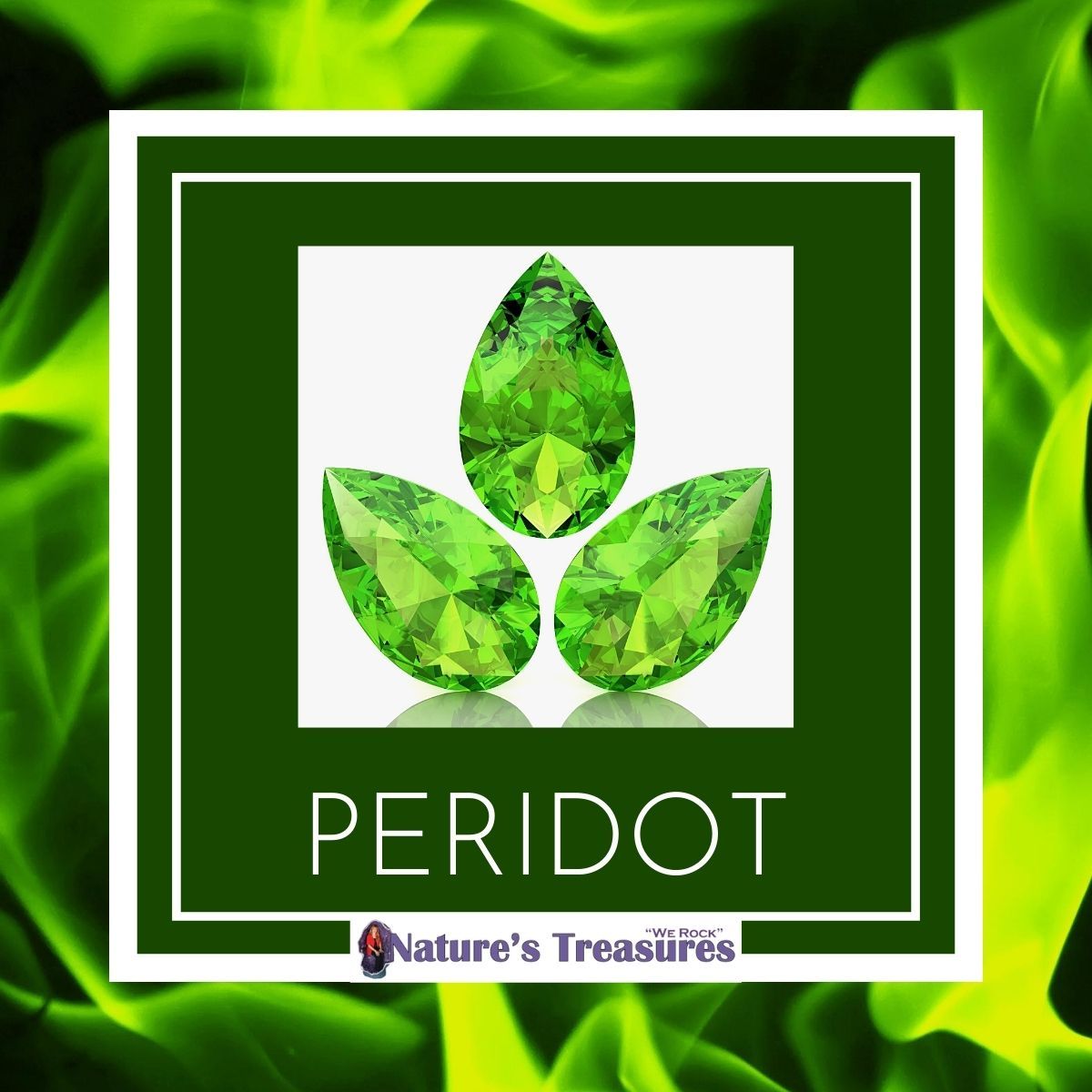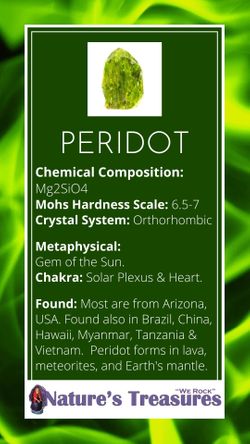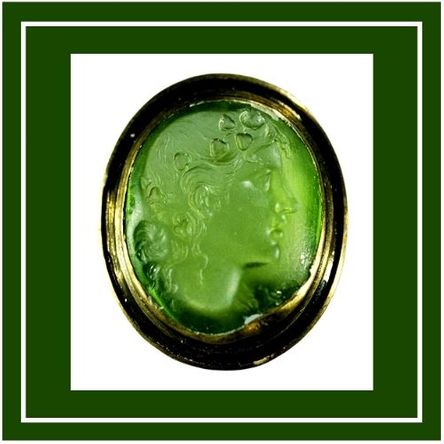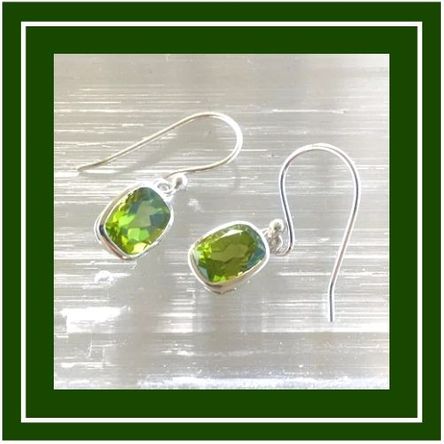In modern times, Peridot is considered to be a stone of transformation that can help you mentally, physically, emotionally and spiritually. Peridot is thought to help those recovering from addictions, whether tobacco, drugs, alcohol, etc. It is believed to amplify the energy during Reiki.
Use Peridot in meditation to facilitate finding and experiencing an enlightened state. Many believe it can help you to find lost items, including yourself. Wear or put Peridot under your pillow to allow peaceful sleep and avert nightmares.
This beautiful green stone is used for bringing personal luck and for alleviating the darkness of depression. Peridot is also said to disperse personal blockages that are preventing you from progression by opening your heart and mind to realize you are deserving to move forward. It is also a stone of abundance and joy.
Peridot works on both your solar plexus and heart chakras, unifying the two and helping to quell our fears and open our hearts to embrace and understand our own needs and emotions. Peridot is the traditional 16th Wedding Anniversary gift, as well
You can cleanse your Peridot with warm, soapy water and soft cloth. Just make sure that all soapy residue is gone. Do NOT use ultrasonic cleaners or steamers. Of course, you can also smudge, use sound (bells, singing bowls, ting-sha) or your preferred cleansing method.
We want to wish a very Happy Birthday to all our September Friends! How wonderful to discover that Peridot is one of your very personal stones that not only is from our beautiful and wondrous planet Earth but is truly star born as well. What a beautiful, mystical and wondrous stone to wear or carry as you traverse your own magical and amazing life path.
P.S. If you would like to read about one of your other birthstones, Sapphire, we have another informative article for you here.




